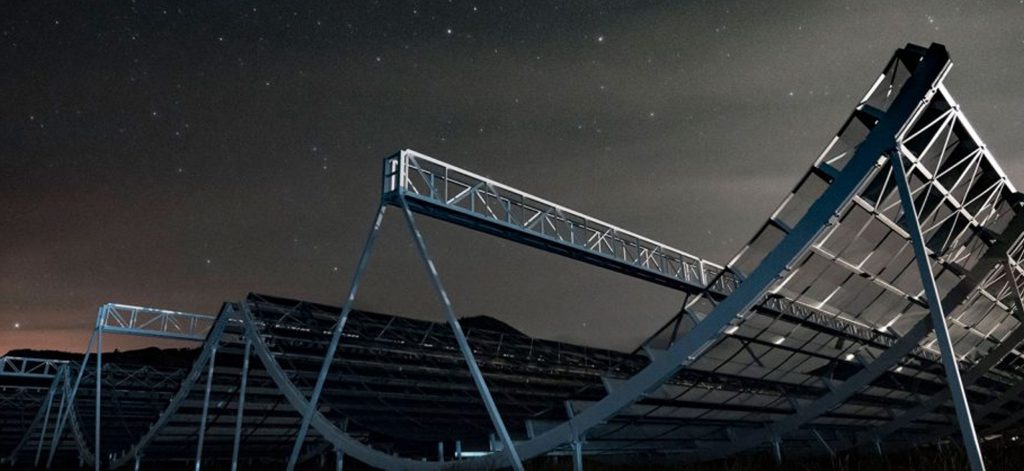By: CIFAR
7 Sep, 2017

The Canadian Hydrogen Intensity Mapping Experiment (CHIME) is a radio telescope made up of “half-pipe” reflectors with an array of radio receivers along the focus. Unlike other radio telescopes, it has no round dish and no moving parts. CHIME will survey more than half the sky each day as the Earth turns. CHIME captures radio frequencies that can map hydrogen gas in the universe, which will allow scientist to create a three-dimensional map of the largest volume of space ever surveyed. This will help us better understand the history of the universe, the nature of distant stars and will help with the study of gravitational waves.
“With the CHIME telescope we will measure the expansion history of the universe and we expect to further our understanding of the mysterious dark energy that drives that expansion ever faster. This is a fundamental part of physics that we don’t understand and it’s a deep mystery. This is about better understanding how the universe began and what lies ahead,” said Mark Halpern, a Senior Fellow in CIFAR’s Gravity & the Extreme Universe program and principal investigator with CHIME.
CHIME is a Canadian collaboration with heavy involvement from CIFAR fellows in the Gravity & the Extreme Universe program (formerly known as Cosmology & Gravity). CHIME brings together scientists from the University of British Columbia, the University of Toronto, McGill University, and the Dominion Radio Astrophysical Observatory, where the telescope was built. Researchers affiliated with CIFAR have helped bring CHIME to life from its unique design to the underlying hydrogen-mapping technique. Key members of the scientific collaboration include Halpern (UBC), CIFAR Azrieli Global Scholar alumnus Keith Vanderlinde (UofT), Senior Fellows J. Richard Bond (UofT), Matt Dobbs (McGill), Gary Hinshaw (UBC) and Ue-Li Pen (UofT).
In addition to mapping the universe, CHIME captures a frequency range that is ideal for studying fast radio bursts and radio pulsars. CIFAR Program Director and R. Howard Webster Foundation Fellow Victoria Kaspi (McGill) is the lead investigator of the CHIME extension to study transient radio signals with Senior Fellows Ingrid Stairs (UBC) and Scott Ransom (National Radio Astronomy Observatory).

As CHIME was being developed, CIFAR researchers recognized that with only a small modification to the backend system, the telescope could simultaneously measure Fast Radio Bursts.
“CHIME’s unique design will enable us to tackle one of the most puzzling new areas of astrophysics today – Fast Radio Bursts. The origin of these bizarre extragalactic events is presently a mystery, with only two dozen reported since their discovery a decade ago. CHIME is likely to detect many of these objects every day, providing a massive treasure trove of data that will put Canada at the forefront of this research,” said Kaspi.
Fast Radio Bursts last only a few thousandths of a second but are far brighter and more powerful than any known short flashes, such as pulses from radio pulsars, a form of neutron star. Their brief nature combined with technological constraints have made them difficult to detect.
The $16-million investment for CHIME was provided by the Canada Foundation for Innovation and the governments of British Columbia, Ontario, and Quebec, with additional funding from the Natural Sciences and Engineering Research Council and CIFAR.